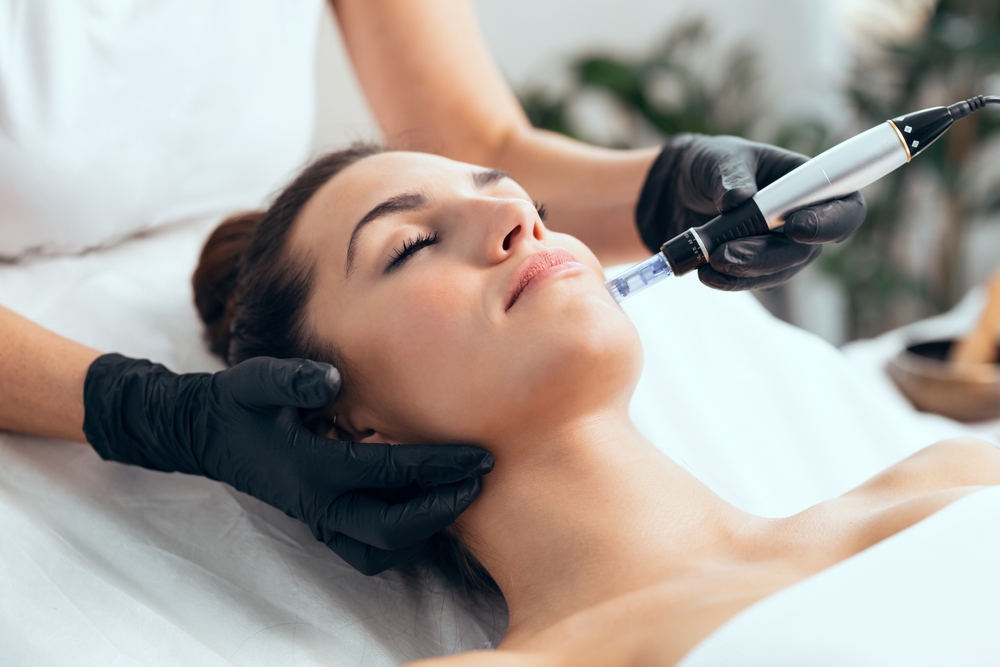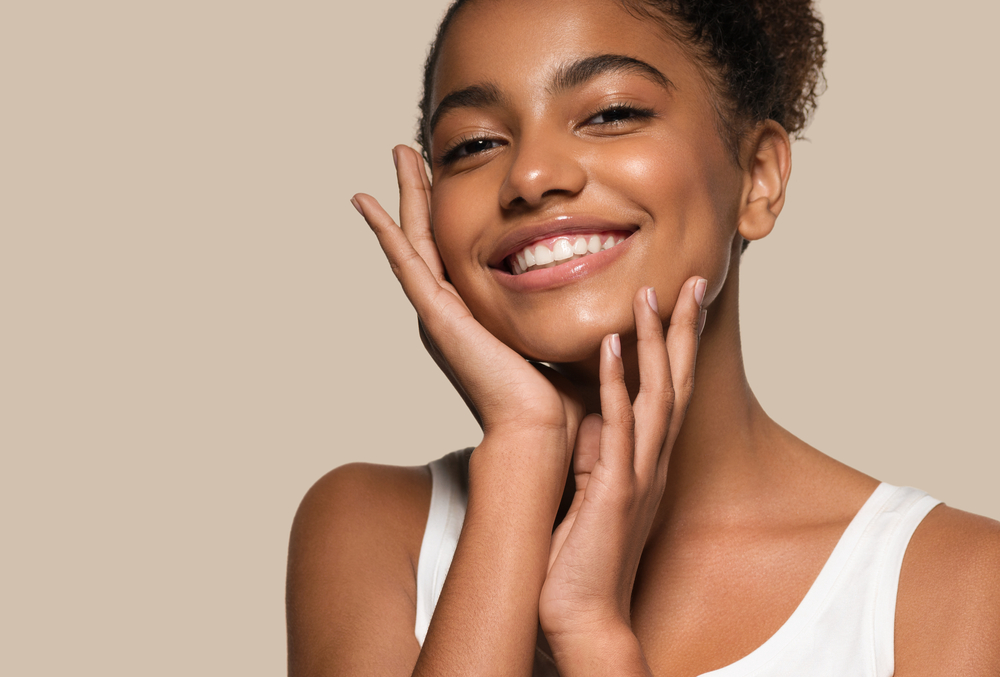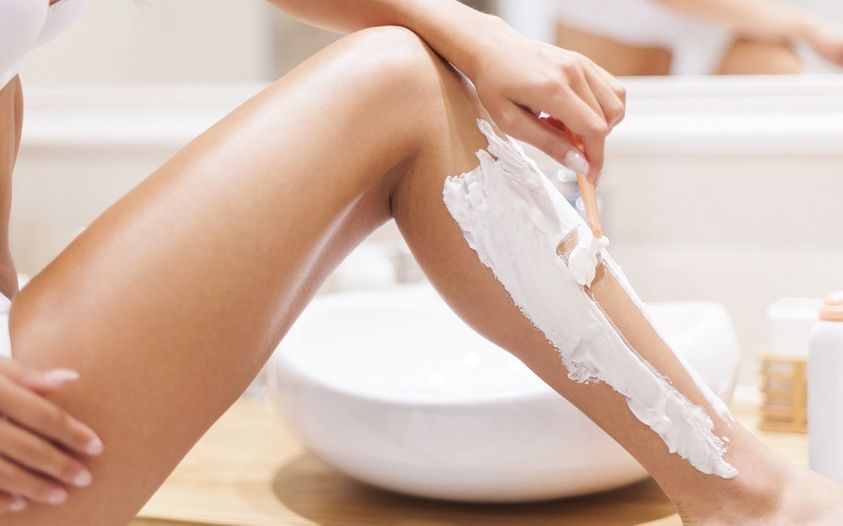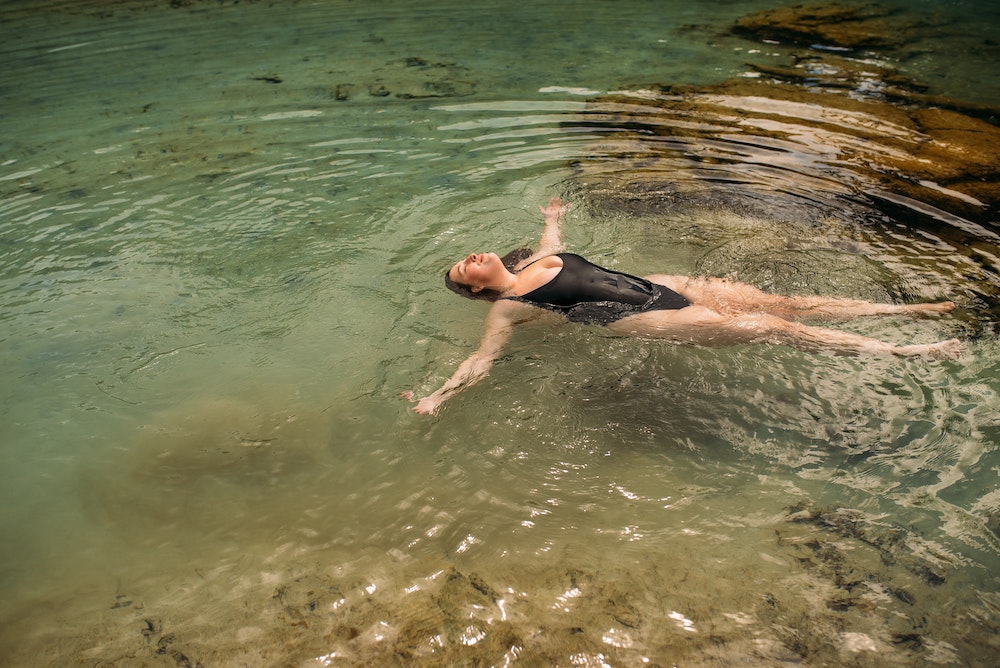This is a question we often get asked in the clinic when our clients are deciding which way they want to go with their hair removal journey, I hope this sheds some light for you.
What Is IPL?
Intense pulsed light (IPL) therapy is a non-invasive treatment that uses high-intensity light to treat skin conditions such as acne, rosacea, age spots, freckles, sun damage, and other skin imperfections. This therapy works by targeting the blood vessels or melanin in the skin, thereby reducing the appearance of skin damage or discoloration. IPL therapy is also used for hair removal and rejuvenation purposes. IPL therapy typically requires multiple sessions to achieve optimal results.
IPL (Intense Pulsed Light) uses a broad spectrum of light to target hair follicles, while laser hair removal uses a specific wavelength of light to target the pigment in the hair follicle. IPL is generally less targeted and may require more treatments, but it can be effective for lighter skin types and larger areas of the body
What are the drawbacks of IPL?
1. Ineffectiveness on darker skin tones: IPL therapy is less effective on darker skin tones, as melanin in the skin can absorb the light energy intended to target hair follicles or pigmentation, causing burns, blisters, and scars.
2. Not suitable for all skin types: IPL cannot be used on certain skin types, such as those with eczema, psoriasis and active acne.
3. Potential side effects: IPL may cause mild to moderate discomfort, especially during the first few sessions. Some other common side effects include redness, swelling, bruising, itching.
4. Multiple sessions required: Most people require multiple sessions of IPL to achieve optimal results.
5. Sun sensitivity: IPL treatment can make your skin more sensitive to sunlight, so it’s important to avoid direct sun exposure for at least a week after each session.
6. Limited effectiveness on fine hair: IPL therapy is not very effective on fine and light-colored hair, as the hair does not have enough pigment to attract the light energy.
What are the advantages of IPL?
1. Non-invasive: Unlike surgical procedures, IPL therapy is a non-invasive procedure. This means that it does not involve any incisions or injections.
3. Effective: IPL therapy has been shown to be highly effective in treating a wide range of skin conditions. Patients often experience significant improvement in their skin tone, texture, and overall appearance after just a few treatments.
4. Minimal side effects: Compared to other skin rejuvenation treatments, IPL therapy has minimal side effects. Most patients experience only mild redness and swelling, which usually subside within a few hours.
5. Long-lasting results: With proper care and maintenance, the results of IPL therapy can last for several months or even years. This makes it an excellent long-term investment for those looking to improve the appearance of their skin.
6. Quick and convenient: IPL therapy sessions typically take only 20-30 minutes to complete and can be performed in-office. This makes it a convenient option for those with busy schedules.
What is laser hair removal?
Laser hair removal is a cosmetic procedure that uses lasers to target and remove hair at the follicle level. The laser beam is directed onto the skin where the hair is present, and the heat from the laser is absorbed by the hair follicles, causing them to be destroyed. This process inhibits hair growth and can lead to long-term hair reduction or removal. Laser hair removal is commonly used to remove unwanted hair from areas such as the underarms, legs, bikini area, face, and arms. It is a safe and effective alternative to traditional hair removal methods like shaving, waxing, and plucking.
Laser hair removal is more precise and may require fewer treatments, but it is generally more effective for darker skin types and smaller areas of the body. It’s important to consult with a professional to determine which method is best for your skin and hair type. At Surrey Laser Clinic we have cutting edge Moveo technology which uses an Alexandrite crystal that is suitable on all skin types and is genuinely pain free.
Drawbacks of laser hair removal?
1. Laser hair removal can be costly, and multiple sessions may be required to achieve long-lasting results. The results suggest that if you shave and wax for the next 20 years 3 times per week the cost of laser hair removal becomes positive after 18 months of product purchase.
2. Pain or discomfort: Some people may experience mild to severe pain or discomfort during the procedure, particularly in sensitive areas. We reduce this with our Moveo head as it is pain free.
3. Skin damage: Laser hair removal can cause skin irritation, redness.
4. Limited effectiveness on certain hair types: Laser hair removal works best on dark, coarse hair, so it may be less effective on lighter or finer hair.
5. Sun sensitivity: After treatment, the treated area may become more sensitive to sunlight, which could result in sunburn or skin damage.
Advantages of laser hair removal?
1. Precision: Laser hair removal targets individual hair follicles, making the treatment more precise than other hair removal methods.
2. Long-lasting results: Laser hair removal can offer long-lasting results compared to traditional hair removal methods such as waxing or shaving.
3. Fast and efficient: Laser hair removal is a fast and efficient process that can treat large areas of the body in a short period.
4. Safe and effective: Laser hair removal is safe when performed by a trained professional and has been shown to be effective in reducing hair growth over time.
5. Reduced ingrown hairs: Unlike other hair removal techniques, laser hair removal reduces the occurrence of ingrown hairs, which can be a painful and unsightly problem for some people.
6. Minimal side effects: Laser hair removal has very few side effects, and any discomfort or redness typically subsides within a few hours to a day.
7. Improved appearance: Laser hair removal can help improve the appearance of the skin by reducing the appearance of stubble or razor burn.
8. Cost-effective: Although laser hair removal may initially seem expensive, the long-term cost of regular hair removal treatments can add up to greater expense.
9. Increased self-confidence: For many people, laser hair removal can lead to increased self-confidence by eliminating unwanted hair and improving overall appearance.
Considering laser hair removal? Perhaps you want to discuss your options, and the pros and cons, in more detail. Either way, our team of experts would be delighted to help. Simply get in touch and we can answer your questions, talk you through the process and arrange a free patch test.
View Our Treatments:








